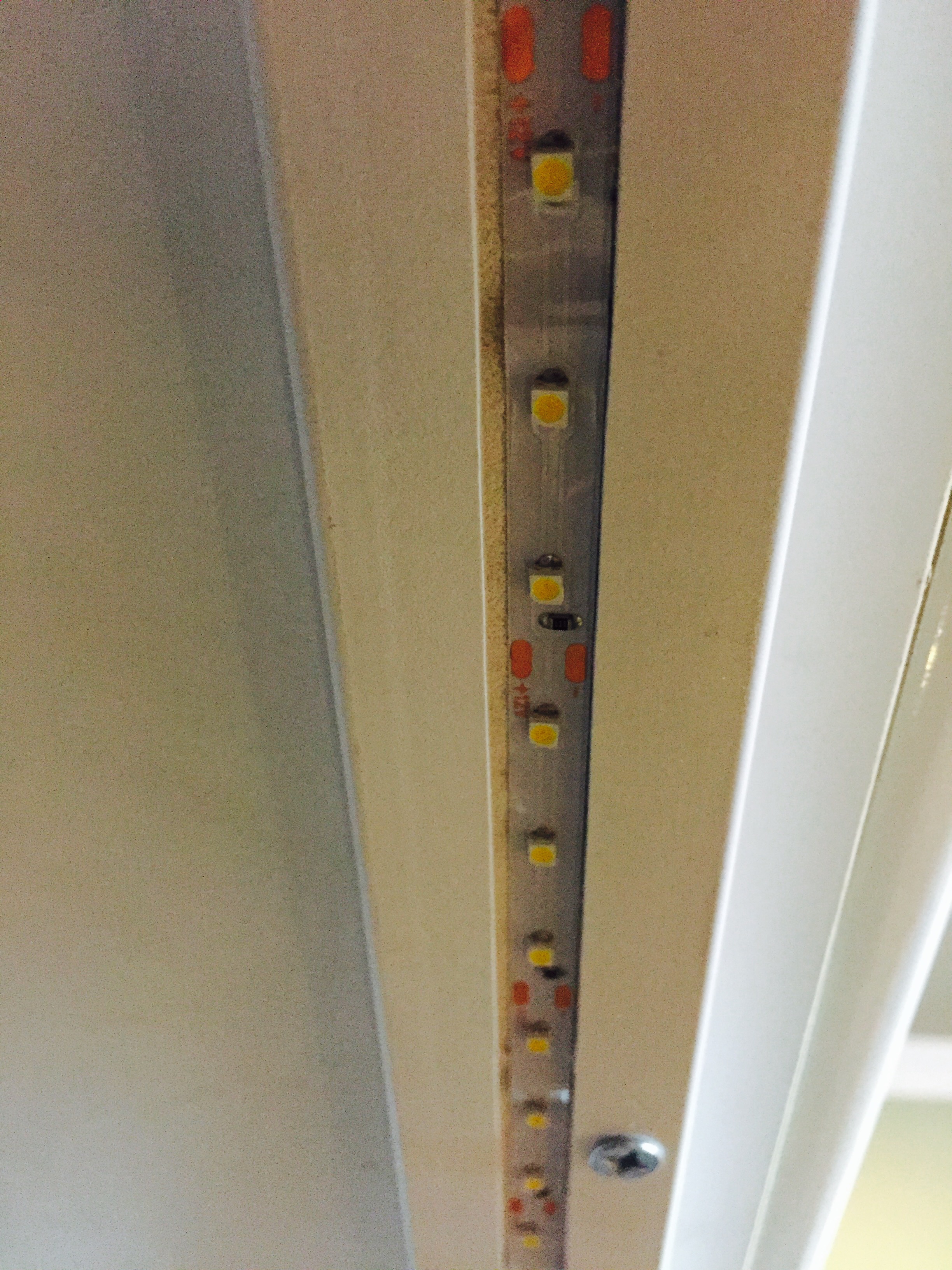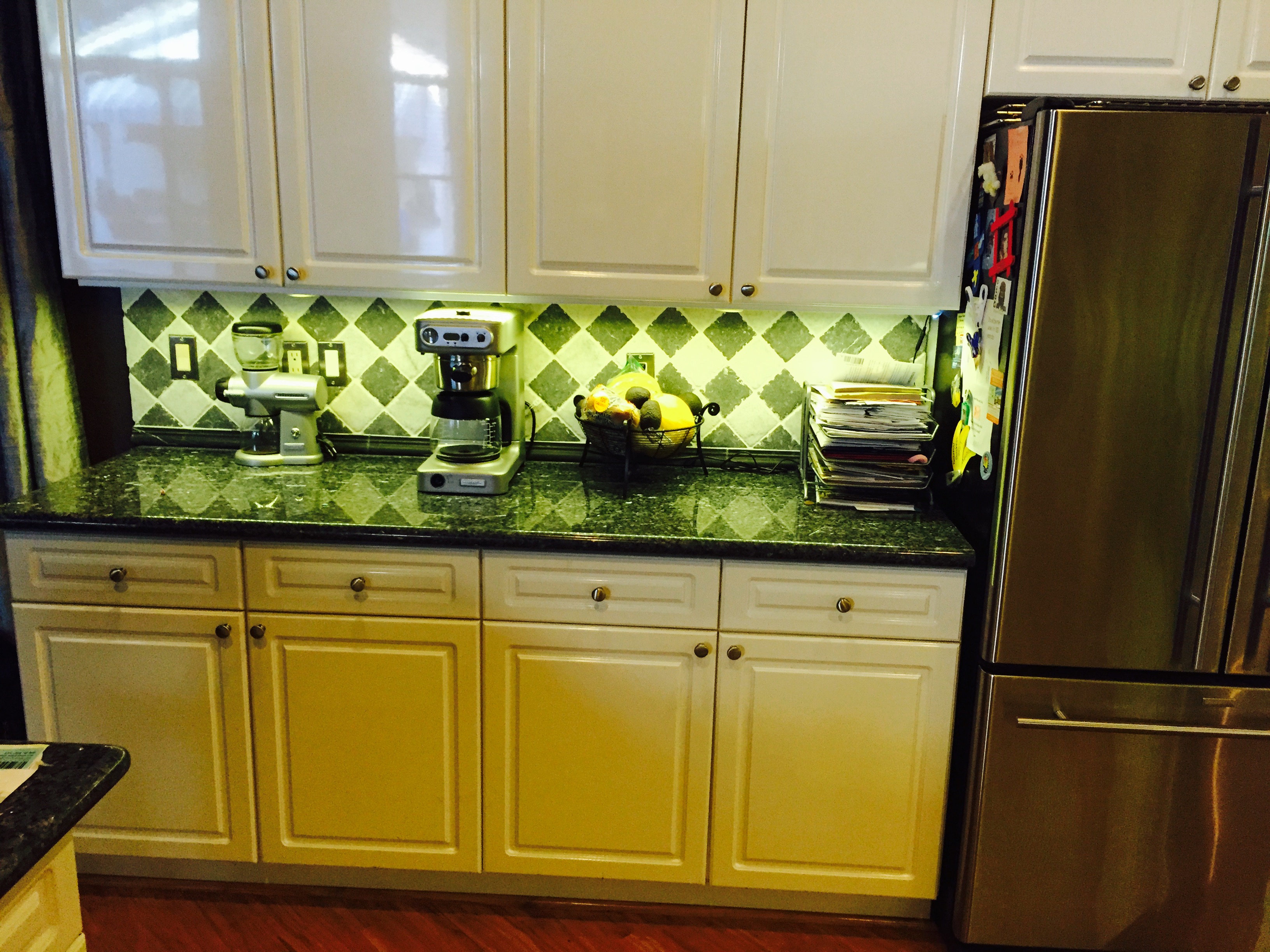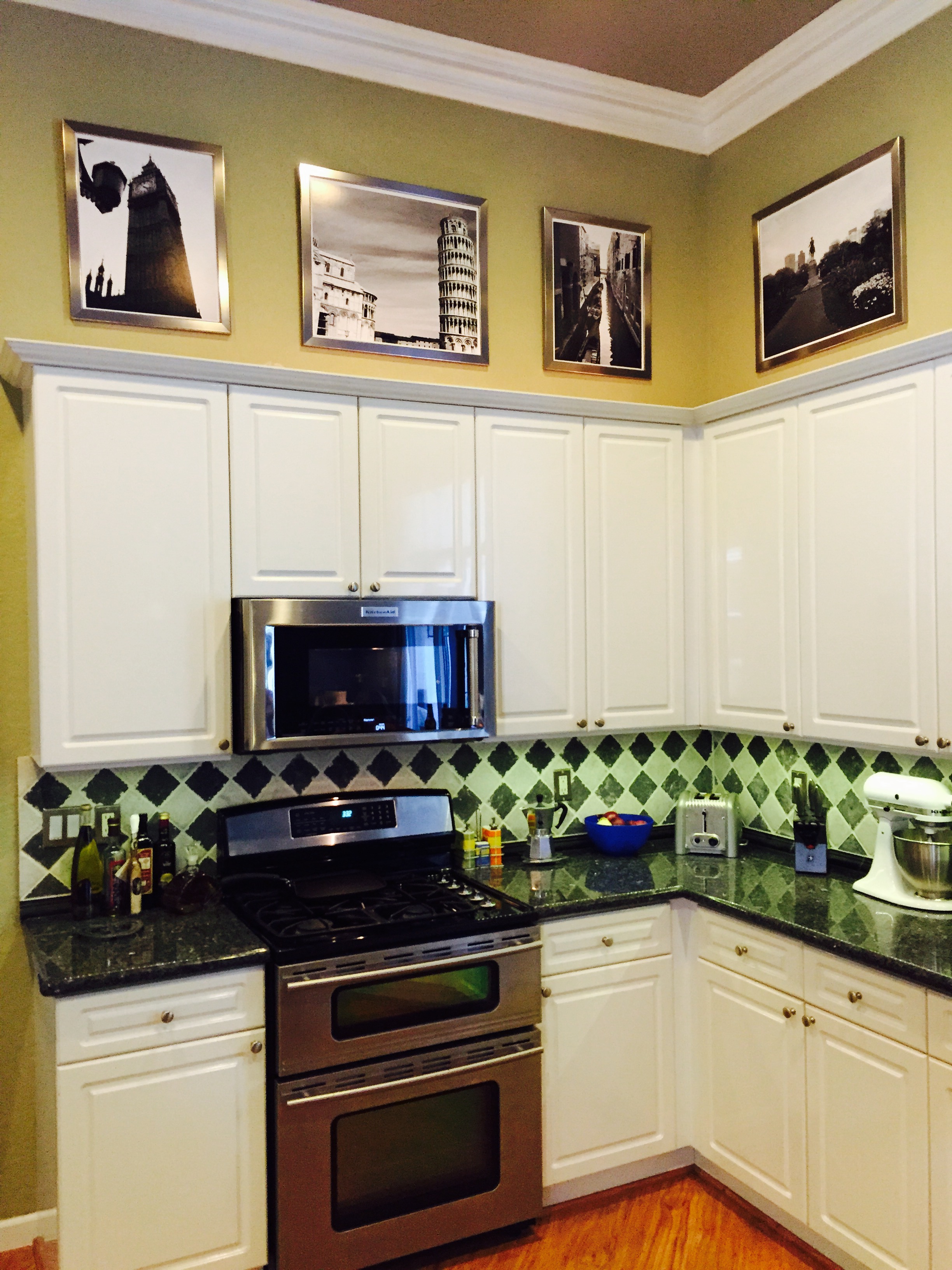Best dimmable countertop lights?
-
Does anyone have a recommendation on dimmable countertop lights? I have looked at the led series from Ikea (Ansluta/Omlopp) but they only support 2 level dimming. I want more than that.
Do I buy a dimmable LED strip from China? (no need for RGB, white is fine but I guess RGB won't hurt)
I need a total of 1.6m lights to be mounted underneath two shelves.
-
If you down the LED strip route I got a white led strip and found they are a bit tooo white. Got the natural white ones look much better but not installed yet. Not entirely sure if they are called natural white though.
They actually seem pretty reasonable from Amazon as well which if you don't want to wait 5 weeks.
-
Does anyone have a recommendation on dimmable countertop lights? I have looked at the led series from Ikea (Ansluta/Omlopp) but they only support 2 level dimming. I want more than that.
Do I buy a dimmable LED strip from China? (no need for RGB, white is fine but I guess RGB won't hurt)
I need a total of 1.6m lights to be mounted underneath two shelves.
Hey @mfalkvidd,
I was working on a similar project with @petewill and worked up a non-blocking version of @blacey code which allows you to use the dimmer controller as a repeating node.
here is what I came up with, sorry the class wasn't pulled out into a header/implementation file.
It does compile and I have tested it, some notes on how to use in the code...
have fun building your project, whichever LEDs you choose.
/** * The MySensors Arduino library handles the wireless radio link and protocol * between your home built sensors/actuators and HA controller of choice. * The sensors forms a self healing radio network with optional repeaters. Each * repeater and gateway builds a routing tables in EEPROM which keeps track of the * network topology allowing messages to be routed to nodes. * * Created by Henrik Ekblad <henrik.ekblad@mysensors.org> * Copyright (C) 2013-2015 Sensnology AB * Full contributor list: https://github.com/mysensors/Arduino/graphs/contributors * * Documentation: http://www.mysensors.org * Support Forum: http://forum.mysensors.org * * This program is free software; you can redistribute it and/or * modify it under the terms of the GNU General Public License * version 2 as published by the Free Software Foundation. * ******************************* * * REVISION HISTORY * Version 1.0 - February 15, 2014 - Bruce Lacey * Version 1.1 - August 13, 2014 - Converted to 1.4 (hek) * Version 1.2 - December 7, 2015 - converted to non-blocking code to facilitate multiple outputs and repeater node (pseudo-threading) <bulldoglowell> * * DESCRIPTION * This sketch provides a Dimmable LED Light using PWM and based Henrik Ekblad * <henrik.ekblad@gmail.com> Vera Arduino Sensor project. * Developed by Bruce Lacey, inspired by Hek's MySensor's example sketches. * * The circuit uses a MOSFET for Pulse-Wave-Modulation to dim the attached LED or LED strip(s). * The MOSFET Gate pin is connected to Arduino pin 3 (LED_PIN), the MOSFET Drain pin is connected * to the LED negative terminal and the MOSFET Source pin is connected to ground. * * This sketch is extensible to support more than one MOSFET/PWM dimmer per circuit. * http://www.mysensors.org/build/dimmer */ #define SN "DimmableLED" #define SV "1.1" #include <MySensor.h> #include <SPI.h> #define LED_PIN_0 3 // Arduino PWM capable pin attached to MOSFET Gate pin #define LED_PIN_1 4 #define FADE_DELAY 15 // Delay in ms for each percentage fade up/down (10ms = 1s full-range dim) class Fade { public: Fade() {}; ~Fade() {}; Fade(int pin, uint32_t timeStep = 15, uint8_t min = 0, uint8_t max = 255); void write(int to), update(void), update(uint32_t time), begin(void), begin(int pin, uint32_t timeStep = 15), begin(int pin, uint32_t timeStep = 15, uint8_t min = 0, uint8_t max = 255); uint8_t read(void), getSetpoint(void); uint32_t readSpeed(void), writeSpeed(uint32_t time); private: uint8_t _min, _max, _targetFade, _pwmRate, _pin; uint32_t _timeStep, _last; }; Fade::Fade(int pin, uint32_t timeStep, uint8_t min, uint8_t max) { _pin = pin; _timeStep = timeStep; _min = min; _max = max; pinMode(_pin, OUTPUT); analogWrite(_pin, _min); _pwmRate = _min; } void Fade::begin(void) { pinMode(_pin, OUTPUT); } void Fade::begin(int pin, uint32_t timeStep) { _pin = pin; _timeStep = timeStep; _min = 0; _max = 255; pinMode(_pin, OUTPUT); analogWrite(_pin, _min); _pwmRate = _min; } void Fade::begin(int pin, uint32_t timeStep, uint8_t min, uint8_t max) { _pin = pin; _timeStep = timeStep; _min = min; _max = max; pinMode(_pin, OUTPUT); analogWrite(_pin, _min); _pwmRate = _min; } void Fade::write(int to) { _targetFade = (uint8_t) constrain(to, _min, _max); this->update(); } void Fade::update() { this->update(millis()); } void Fade::update(uint32_t time) { if (time - _timeStep > _last) { _last = time; if (_pwmRate > _targetFade) analogWrite(_pin, --_pwmRate); if (_pwmRate < _targetFade) analogWrite(_pin, ++_pwmRate); } } uint8_t Fade::getSetpoint() { return _targetFade; } uint8_t Fade::read() { return _pwmRate; } uint32_t Fade::readSpeed() { return _timeStep; } uint32_t Fade::writeSpeed(uint32_t time) { _timeStep = time; } Fade led[2]; // Create two Fade objects, led[0] & led[1] MySensor gw; MyMessage dimmer0Msg(0, V_DIMMER); MyMessage lightM0sg(0, V_LIGHT); MyMessage dimmer1Msg(1, V_DIMMER); MyMessage light1Msg(1, V_LIGHT); void setup() { //Serial.begin(9600); led[0].begin(LED_PIN_0, FADE_DELAY, 0, 255); // initialize the Fade objects led[0].write(0); // set initial value to "off" led[1].begin(LED_PIN_1, FADE_DELAY, 0, 255); led[1].write(0); gw.begin(incomingMessage, true); gw.present( 0, S_DIMMER ); gw.request( 0, V_DIMMER ); gw.present( 1, S_DIMMER ); gw.request( 1, V_DIMMER ); gw.sendSketchInfo(SN, SV); } void loop() { gw.process(); led[0].update(); // must keep this command in loop for every Fade object led[1].update(); // calling update transitions the PWM towards the setpoint, without blocking } void incomingMessage(const MyMessage &message) { if (message.type == V_LIGHT || message.type == V_DIMMER) { int requestedLevel = atoi(message.data); requestedLevel *= ( message.type == V_LIGHT ? 100 : 1 ); requestedLevel = requestedLevel > 100 ? 100 : requestedLevel; requestedLevel = requestedLevel < 0 ? 0 : requestedLevel; Serial.print(F("Changing led[")); Serial.print(message.sensor); Serial.print(F("] level to ")); Serial.print(requestedLevel); Serial.print(F(" from ")); Serial.println(map(led[message.sensor].getSetpoint(), 0, 255, 0, 100)); led[message.sensor].write(map(requestedLevel, 0, 100, 0, 255)); } } -
Here in the UK we have two different colours of white for LED strips. Normally they're called 'Warm White' and 'Cool White'. The cool ones are the ones that are really bright white, the warm ones are almost tinted/yellowey white, more subtle on the eyes. But i personally like the look of the cool white ones.
-
Hey @mfalkvidd,
I was working on a similar project with @petewill and worked up a non-blocking version of @blacey code which allows you to use the dimmer controller as a repeating node.
here is what I came up with, sorry the class wasn't pulled out into a header/implementation file.
It does compile and I have tested it, some notes on how to use in the code...
have fun building your project, whichever LEDs you choose.
/** * The MySensors Arduino library handles the wireless radio link and protocol * between your home built sensors/actuators and HA controller of choice. * The sensors forms a self healing radio network with optional repeaters. Each * repeater and gateway builds a routing tables in EEPROM which keeps track of the * network topology allowing messages to be routed to nodes. * * Created by Henrik Ekblad <henrik.ekblad@mysensors.org> * Copyright (C) 2013-2015 Sensnology AB * Full contributor list: https://github.com/mysensors/Arduino/graphs/contributors * * Documentation: http://www.mysensors.org * Support Forum: http://forum.mysensors.org * * This program is free software; you can redistribute it and/or * modify it under the terms of the GNU General Public License * version 2 as published by the Free Software Foundation. * ******************************* * * REVISION HISTORY * Version 1.0 - February 15, 2014 - Bruce Lacey * Version 1.1 - August 13, 2014 - Converted to 1.4 (hek) * Version 1.2 - December 7, 2015 - converted to non-blocking code to facilitate multiple outputs and repeater node (pseudo-threading) <bulldoglowell> * * DESCRIPTION * This sketch provides a Dimmable LED Light using PWM and based Henrik Ekblad * <henrik.ekblad@gmail.com> Vera Arduino Sensor project. * Developed by Bruce Lacey, inspired by Hek's MySensor's example sketches. * * The circuit uses a MOSFET for Pulse-Wave-Modulation to dim the attached LED or LED strip(s). * The MOSFET Gate pin is connected to Arduino pin 3 (LED_PIN), the MOSFET Drain pin is connected * to the LED negative terminal and the MOSFET Source pin is connected to ground. * * This sketch is extensible to support more than one MOSFET/PWM dimmer per circuit. * http://www.mysensors.org/build/dimmer */ #define SN "DimmableLED" #define SV "1.1" #include <MySensor.h> #include <SPI.h> #define LED_PIN_0 3 // Arduino PWM capable pin attached to MOSFET Gate pin #define LED_PIN_1 4 #define FADE_DELAY 15 // Delay in ms for each percentage fade up/down (10ms = 1s full-range dim) class Fade { public: Fade() {}; ~Fade() {}; Fade(int pin, uint32_t timeStep = 15, uint8_t min = 0, uint8_t max = 255); void write(int to), update(void), update(uint32_t time), begin(void), begin(int pin, uint32_t timeStep = 15), begin(int pin, uint32_t timeStep = 15, uint8_t min = 0, uint8_t max = 255); uint8_t read(void), getSetpoint(void); uint32_t readSpeed(void), writeSpeed(uint32_t time); private: uint8_t _min, _max, _targetFade, _pwmRate, _pin; uint32_t _timeStep, _last; }; Fade::Fade(int pin, uint32_t timeStep, uint8_t min, uint8_t max) { _pin = pin; _timeStep = timeStep; _min = min; _max = max; pinMode(_pin, OUTPUT); analogWrite(_pin, _min); _pwmRate = _min; } void Fade::begin(void) { pinMode(_pin, OUTPUT); } void Fade::begin(int pin, uint32_t timeStep) { _pin = pin; _timeStep = timeStep; _min = 0; _max = 255; pinMode(_pin, OUTPUT); analogWrite(_pin, _min); _pwmRate = _min; } void Fade::begin(int pin, uint32_t timeStep, uint8_t min, uint8_t max) { _pin = pin; _timeStep = timeStep; _min = min; _max = max; pinMode(_pin, OUTPUT); analogWrite(_pin, _min); _pwmRate = _min; } void Fade::write(int to) { _targetFade = (uint8_t) constrain(to, _min, _max); this->update(); } void Fade::update() { this->update(millis()); } void Fade::update(uint32_t time) { if (time - _timeStep > _last) { _last = time; if (_pwmRate > _targetFade) analogWrite(_pin, --_pwmRate); if (_pwmRate < _targetFade) analogWrite(_pin, ++_pwmRate); } } uint8_t Fade::getSetpoint() { return _targetFade; } uint8_t Fade::read() { return _pwmRate; } uint32_t Fade::readSpeed() { return _timeStep; } uint32_t Fade::writeSpeed(uint32_t time) { _timeStep = time; } Fade led[2]; // Create two Fade objects, led[0] & led[1] MySensor gw; MyMessage dimmer0Msg(0, V_DIMMER); MyMessage lightM0sg(0, V_LIGHT); MyMessage dimmer1Msg(1, V_DIMMER); MyMessage light1Msg(1, V_LIGHT); void setup() { //Serial.begin(9600); led[0].begin(LED_PIN_0, FADE_DELAY, 0, 255); // initialize the Fade objects led[0].write(0); // set initial value to "off" led[1].begin(LED_PIN_1, FADE_DELAY, 0, 255); led[1].write(0); gw.begin(incomingMessage, true); gw.present( 0, S_DIMMER ); gw.request( 0, V_DIMMER ); gw.present( 1, S_DIMMER ); gw.request( 1, V_DIMMER ); gw.sendSketchInfo(SN, SV); } void loop() { gw.process(); led[0].update(); // must keep this command in loop for every Fade object led[1].update(); // calling update transitions the PWM towards the setpoint, without blocking } void incomingMessage(const MyMessage &message) { if (message.type == V_LIGHT || message.type == V_DIMMER) { int requestedLevel = atoi(message.data); requestedLevel *= ( message.type == V_LIGHT ? 100 : 1 ); requestedLevel = requestedLevel > 100 ? 100 : requestedLevel; requestedLevel = requestedLevel < 0 ? 0 : requestedLevel; Serial.print(F("Changing led[")); Serial.print(message.sensor); Serial.print(F("] level to ")); Serial.print(requestedLevel); Serial.print(F(" from ")); Serial.println(map(led[message.sensor].getSetpoint(), 0, 255, 0, 100)); led[message.sensor].write(map(requestedLevel, 0, 100, 0, 255)); } } -
@BulldogLowell thanks. What LEDs did you use?
I used these on Amazon. By and large the reviews are spot on... but I installed inside a molding strip that I routed out like this and mounted underneath, to make it have a finished look. You can see the molding in the photo below, just inboard of the doors. I used a clear adhesive to augment the not-great adhesive backing that the strips come with, something like a bead of hot glue down each side of the milled out molding.

and the finished product like this... though the color is horribly off on my iPhone photo. It looks much warmer to the eye in real life.

Most importantly, they allow for a lot of light and a happy wife!Photo from the other side shows the LED's above as well, though not completed for the left hand island:

Again, the Colors are all wrong!! -
I used these on Amazon. By and large the reviews are spot on... but I installed inside a molding strip that I routed out like this and mounted underneath, to make it have a finished look. You can see the molding in the photo below, just inboard of the doors. I used a clear adhesive to augment the not-great adhesive backing that the strips come with, something like a bead of hot glue down each side of the milled out molding.

and the finished product like this... though the color is horribly off on my iPhone photo. It looks much warmer to the eye in real life.

Most importantly, they allow for a lot of light and a happy wife!Photo from the other side shows the LED's above as well, though not completed for the left hand island:

Again, the Colors are all wrong!! -
If ordered some DUAL white ledstrips. They've promissed me that you can mix them in to warmer light. Made be something for you.
Will play with them and report my findings here.
-
I have a RGBW strip on top of my kitchen cabinets and I combine the 4 channels as follows to get a warm white i like:
Red 100%
Green 50%
Blue 0%
White 10% (this is cool white)The benefit of using a RGBW this is that I can have the strip inform me of thing by using any collor. Example, If some alarm is tripped I can send the strip in to alarm mode and then it will blink Red and Blue. sample sketch: here
-
I have a RGBW strip on top of my kitchen cabinets and I combine the 4 channels as follows to get a warm white i like:
Red 100%
Green 50%
Blue 0%
White 10% (this is cool white)The benefit of using a RGBW this is that I can have the strip inform me of thing by using any collor. Example, If some alarm is tripped I can send the strip in to alarm mode and then it will blink Red and Blue. sample sketch: here
Hey Tomas!!
I'd love to add color, but my wife says "NO!"
what ledstrip ddi you use? My kids are eager to use color, so I may do the under-bed ledstrip for my daughter.
-
Hey Tomas!!
I'd love to add color, but my wife says "NO!"
what ledstrip ddi you use? My kids are eager to use color, so I may do the under-bed ledstrip for my daughter.
@BulldogLowell, i too wouldn't like colour there for everyday use, but for alerts i'de have brightly flashing red lighting and for notifications like main door entry i'de have them slowly fade from white to green then back again for one cycle.
-
@BulldogLowell, i too wouldn't like colour there for everyday use, but for alerts i'de have brightly flashing red lighting and for notifications like main door entry i'de have them slowly fade from white to green then back again for one cycle.
nice idea!
-
nice idea!
@BulldogLowell said:
nice idea!
Just one of many ideas, the possibilties are endless. I'de always go for RGB leds over just white, allows for more customisation while able to still give you the same white as the white leds.
-
@BulldogLowell said:
nice idea!
Just one of many ideas, the possibilties are endless. I'de always go for RGB leds over just white, allows for more customisation while able to still give you the same white as the white leds.
@Samuel235 said:
Just one of many ideas, the possibilties are endless. I'de always go for RGB leds over just white, allows for more customisation while able to still give you the same white as the white leds.
... unless, as in my use case, colors are not needed.
I'm too stingy to pay for the unused dry powder!
;)
